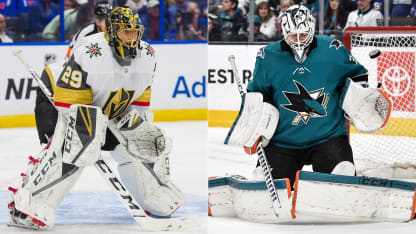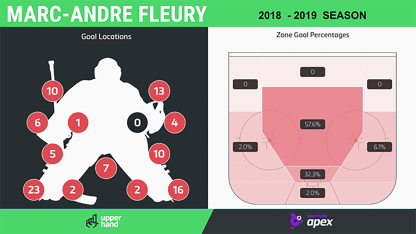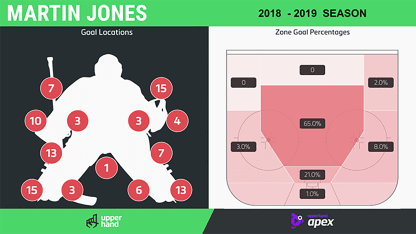Stretch him out:Jones gave up 17 breakaway goals, well above the average of 10.1 percent, and while we'd need to see how many breakaway chances he faced to get a save percentage, the successful attempts involved getting him moving. Whether it was the nine goals where the shooter pulled the puck across the slot line, or nine where they went against the grain with a shot or deke, getting him moving one direction and sending the puck the other way, the tendency was to open up and extend on wide plays rather than staying over his knees.
Against the grain:There aren't many extremes in any of Jones' charts, which isn't surprising given his neutral, well-balanced approach, but there were 24 against-the-grain goals, the second straight year he was well above the 16.9 percent average. Part of this can be explained by a tendency to either retreat or come across his crease flat, without full rotation into new angle, which doesn't let him square up as fast, if at all, and leaves the far side exposed. It's more pronounced moving to his blocker side and can also leave him stranded off his posts on rebound recoveries in that direction, each of which helps explain some of the additional goals from outside an already expanded and generous home plate area on his right side.
Traffic management:Jones gave up 18 screen goals, below the average (21.2 percent) and down from last season (23) but was caught at times retreating deep into his crease behind traffic and dropping directly behind the screening opponent rather than picking a side.




















